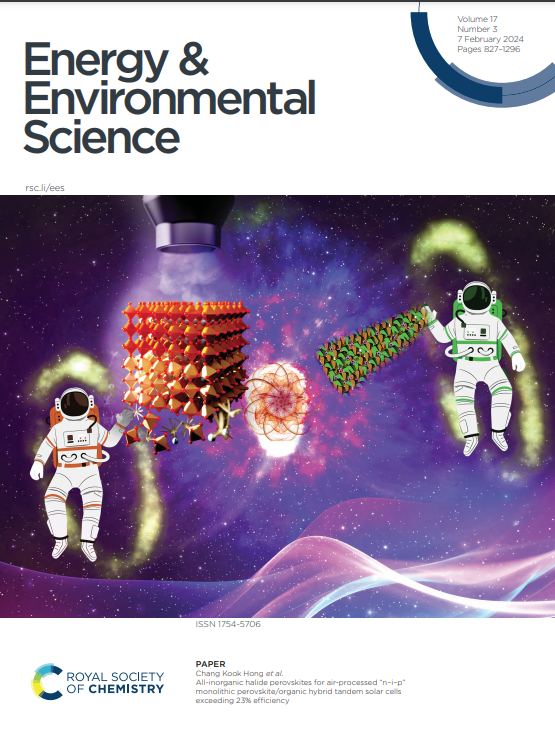Electrolytic hydrogenation at 100 mA cm−2 and 1.6 volts
IF 32.4
1区 材料科学
Q1 CHEMISTRY, MULTIDISCIPLINARY
引用次数: 0
Abstract
Electrochemical hydrogenation (ECH) could decarbonize hydrogenation reactions across energy, chemical, and pharmaceutical sectors by avoiding high-temperature reactors and sourcing hydrogen from water instead of fossil fuels. However, ECH has yet to be commercialized due to (i) impractically high operating voltages and (ii) the parasitic crossover of organic reagents across the membrane separating the cathode from the anode. We address both of these issues here with a continuous-flow zero-gap palladium (Pd) membrane electrolyzer (“Pd membrane electrolyzer”). This reactor is unique because it consists of two membranes: (i) a proton-exchange membrane (“PEM”); and (ii) a hydrogen-permeable Pd membrane. During operation, water in the anode chamber is oxidized to form H+. The H+ was then transported through the PEM to be reduced into H atoms or hydride (“reactive hydrogen”) at the Pd membrane. The reactive hydrogen passes through the Pd membrane to hydrogenate unsaturated species on the opposing side of the membrane. With the anode and cathode pressed against the PEM akin to high-performance water electrolyzers, the voltage required to generate reactive hydrogen is minimized. The use of a solid Pd membrane precludes the unwanted crossover of organic species and electrolytes, thereby overcoming a persistent shortcoming of ECH. We support these claims by demonstrating the hydrogenation of styrene as a model reaction. These experiments show a low cell voltage (1.6 V at 100 mA cm−2), high faradaic efficiency (>95%), fast reaction rates (1.66 mmol h−1 cm−2), and high energy efficiency (47%) for over 30 h of continuous hydrogenation.

电解加氢在100毫安厘米−2和1.6伏
电化学加氢(ECH)可以通过避免高温反应器和从水中而不是化石燃料中获取氢气,使能源、化工和制药行业的加氢反应脱碳。然而,由于(i)不切实际的高工作电压和(ii)有机试剂在分离阴极和阳极的膜上的寄生交叉,ECH尚未商业化。我们在这里用连续流零间隙钯(Pd)膜电解槽(“Pd膜电解槽”)解决了这两个问题。这个反应器是独一无二的,因为它由两层膜组成:(i)质子交换膜(PEM);以及(ii)透氢钯膜。在工作过程中,阳极室中的水被氧化生成H+。H+随后通过PEM传输,在Pd膜上还原成H原子或氢化物(“活性氢”)。反应氢通过钯膜,使膜对面的不饱和物质氢化。阳极和阴极压在PEM上,类似于高性能的水电解槽,产生活性氢所需的电压被最小化。固体钯膜的使用排除了不必要的有机物质和电解质的交叉,从而克服了ECH的一个持续的缺点。我们通过演示苯乙烯的氢化反应作为一个模型反应来支持这些说法。这些实验表明,电池电压低(1.6 V, 100 mA cm−2),法拉第效率高(>95%),反应速度快(1.66 mmol h−1 cm−2),连续加氢超过30小时的能量效率高(47%)。
本文章由计算机程序翻译,如有差异,请以英文原文为准。
求助全文
约1分钟内获得全文
求助全文
来源期刊

Energy & Environmental Science
化学-工程:化工
CiteScore
50.50
自引率
2.20%
发文量
349
审稿时长
2.2 months
期刊介绍:
Energy & Environmental Science, a peer-reviewed scientific journal, publishes original research and review articles covering interdisciplinary topics in the (bio)chemical and (bio)physical sciences, as well as chemical engineering disciplines. Published monthly by the Royal Society of Chemistry (RSC), a not-for-profit publisher, Energy & Environmental Science is recognized as a leading journal. It boasts an impressive impact factor of 8.500 as of 2009, ranking 8th among 140 journals in the category "Chemistry, Multidisciplinary," second among 71 journals in "Energy & Fuels," second among 128 journals in "Engineering, Chemical," and first among 181 scientific journals in "Environmental Sciences."
Energy & Environmental Science publishes various types of articles, including Research Papers (original scientific work), Review Articles, Perspectives, and Minireviews (feature review-type articles of broad interest), Communications (original scientific work of an urgent nature), Opinions (personal, often speculative viewpoints or hypotheses on current topics), and Analysis Articles (in-depth examination of energy-related issues).
 求助内容:
求助内容: 应助结果提醒方式:
应助结果提醒方式:


